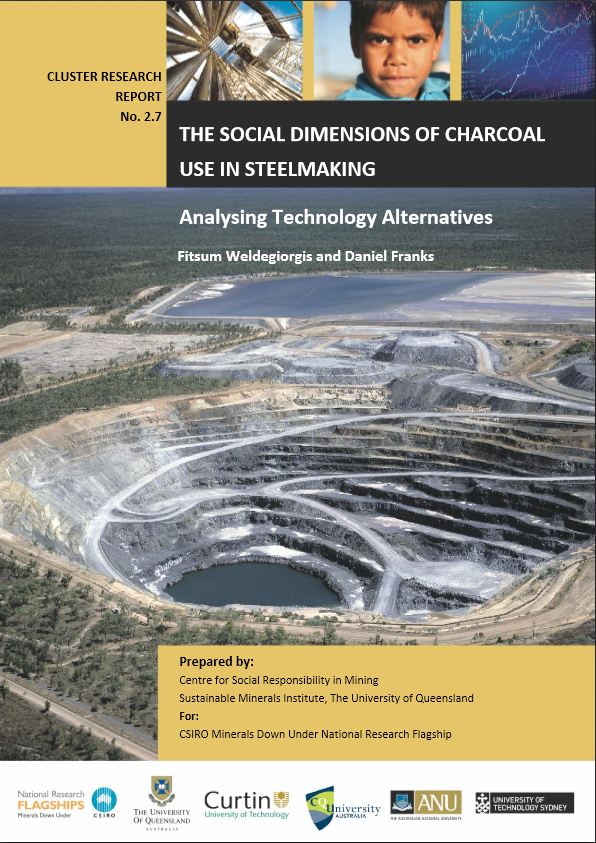The social dimensions of charcoal use in steel making
The increasing importance of global climatic change is driving research and development in low emissions technologies. One such technology is the potential shift from the use of metallurgical coal in steel making to renewable sources of charcoal production from biomass. This paper adapts social life cycle assessment methodologies to undertake an analysis of the social dimensions of technology alternatives in steel making. Three technology alternatives are investigated: charcoal produced from Radiata pine plantation forestry; charcoal produced from Mallee revegetation on agricultural land; and metallurgical coal. Impact indicators analysed include land-use, employment, workplace health & safety and a qualitative analysis of identified stakeholder issues. The paper finds that no unique solution exists for optimising the social performance of the technology alternatives across all of the indicators. Biomass alternatives were found to be significant generators of direct employment at the regional level (2.9 x 10-3 per tonne of steel for Pine biomass and 5.41 x 10-4 for Mallee biomass as compared to 2.66 x 10-4 for metallurgical coal). However, they were also identified as having concomitantly higher rates of workplace injuries (6.28 x 10-5 per tonne of steel for pine compared to 3.23 x 10-6 per tonne of steel for coal). The scale effects of a shift to biomass technologies on land-use are significant. When compared to metallurgical coal, Pine biomass alternatives represent a 3,840% increase in landuse (with equivalent increases required for Mallee). Production of pine plantation forestry in Australia would be required to increase by 67% to accommodate the full substitution of coal (an additional 1.35 million hectares under plantation forestry), while Mallee biomass plantation would require a full 10,176% increase on the current plantation. Land-use conflicts have been associated with plantation forestry expansion, with even revegetation projects undertaken for conservation generating local level dissatisfaction and competition with other land-use in some cases. On the other hand, local level conflicts have also manifest from the community health and amenity impacts and subsidence effects associated with metallurgical coal mining, despite the relatively small area of land impacted (5 x 10-3 hectares per tonne of steel). Charcoal produced from Mallee biomass planted as a conservation measure on farmland has the benefit; however, of representing a shared land-use that in turn supports farm employment through an additional revenue stream and the management of dryland salinity. The paper was prepared as part of the Technology Futures Project, Mineral Futures Cluster Collaboration, CSIRO Minerals Down Under National Research Flagship. The project is investigating the potential use of constructive technology assessment to inform the development of transformational exploration, extraction and processing technologies within the flagship.
Publisher: CSIRO Minerals Down Under National Research Flagship
Region: Australia
Type: Report
CITATION
Weldegiorgis, F.S. and Franks, D.M. 2012.The Social Dimensions of Charcoal Use in Steelmaking: Analysing Technology Alternatives. Prepared for CSIRO Minerals Down Under Flagship, Minerals Futures Cluster Collaboration, by the Centre for Social Responsibility in Mining, Sustainable Minerals Institute, The University of Queensland. December. Brisbane

